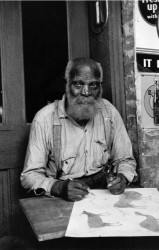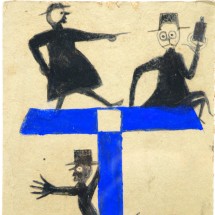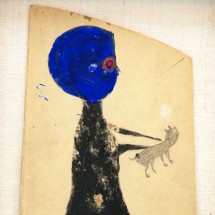Bill Traylor (American, 1854–1949)

1939, photo courtesy of the Charles E. and Eugenia C. Shannon Trust
Bill Traylor was born a slave on a small cotton plantation in Benton, Alabama, around 1853. There he remained until well after emancipation, working as a sharecropper and laborer. Very little is known about Traylor’s life, except what can be discerned from census reports. In 1939 Traylor, unemployed and homeless, was “discovered” by Charles E. Shannon, an artist himself, while drawing on found paper and cardboard on a street corner. During the next three years, Traylor would produce over twelve hundred drawings and paintings. Shannon promoted and preserved Traylor’s artwork and in the late 1970s, thirty years after Traylor’s death, the artwork prompted a national interest in African American history and culture awoken by the civil rights movement and the overturning of Jim Crow laws. Traylor’s artwork is often admired for the artist’s remarkable use of empty space, the individuality of his figures and animals, and his simplicity of line and shape. Often working on found paper and cardboard, Traylor employed each uneven surface to enliven his spare compositions, creating expressive scenes that are dynamic even in their simplicity.
- Untitled (Construction with Figures), ca. 1939-42
- Untitled (Girl with Dog), ca. 1939 – 1942


